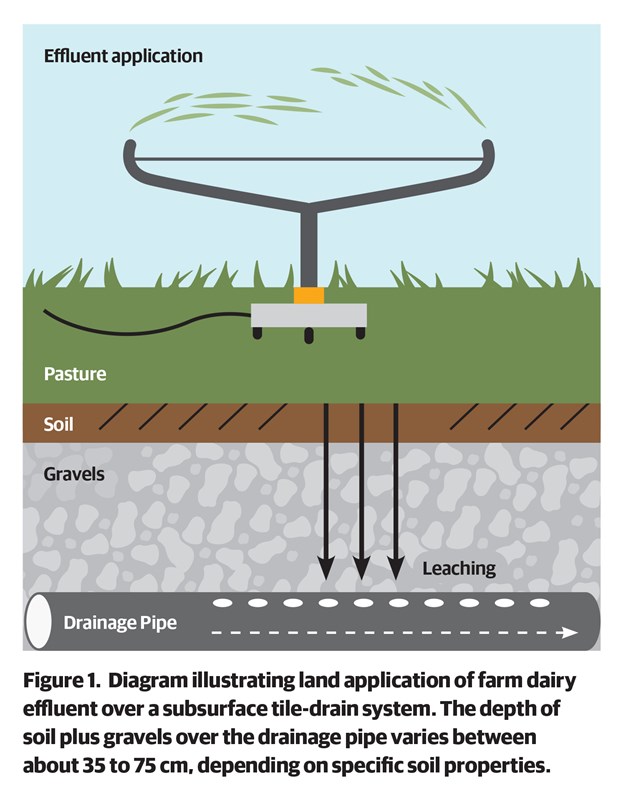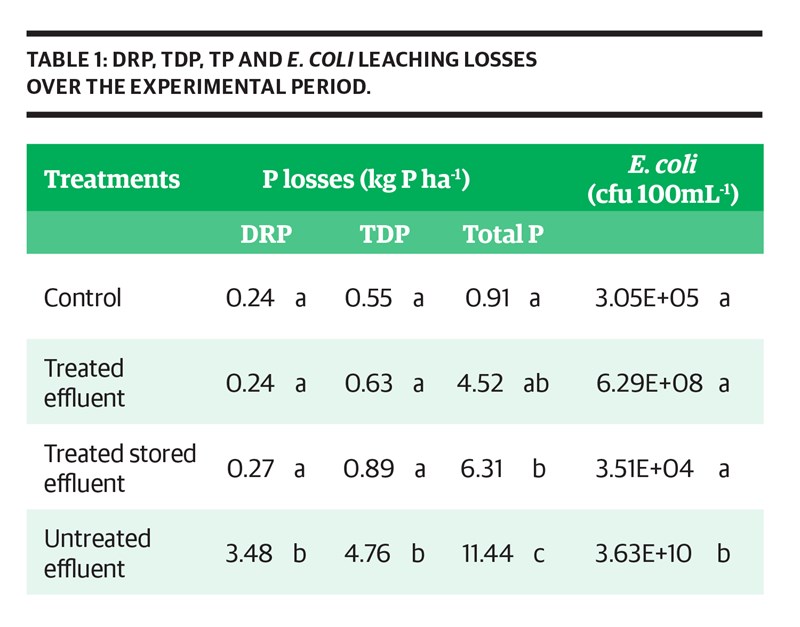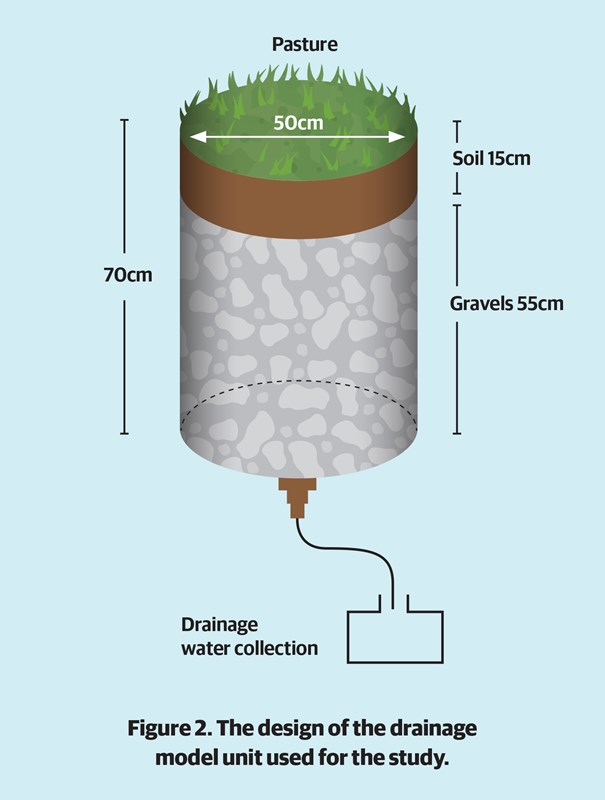Tuesday, 9 August 2022
ClearTech and EcoPond technology show promise for tile drain situations
Studies have shown subsurface drainage in effluent areas is a significant issue when it comes to phosphorus (P) and E. coli loss. Anne Lee investigates new research showing how ClearTech and EcoPond technology can help mitigate these losses to the environment.
ClearTech- and EcoPond-treated effluent will be even better for the environment when used in situations where tile drains are present, new research has found.
Subsurface drains are known to make great highways for excess water, but nutrients such as P and bacteria can also make a quick exit from paddocks to waterways along the same channels (Figure 1).

Scientists at Lincoln University have already shown the ClearTech and EcoPond systems turn phosphate in the effluent into a form that’s more tightly held by the soil making it less likely to leach.
They’ve also shown the treatment destroys E. coli bacteria.
But recent research (1) by Lincoln University PhD student Xueying Che, working with Professor Hong Di and Emeritus Professor Keith Cameron, has found the treatments also significantly cut P and E. coli loss even when subsurface drains have been installed.
The findings are important, because up until Xueying’s work, all the studies on the systems have been carried out using lysimeters with 70 cm deep soil. In those studies dissolved reactive phosphorous (DRP) losses in leachate were reduced by up to 99.5% when treated effluent was applied compared with untreated effluent.
In her work, the lysimeters had only 15 cm of soil with pasture growing in it, overlaying 55 cm of gravel, simulating tile or subsurface drain installations (Figure 2).
Xueying treated effluent with polyferric sulphate, the same active ingredient used in the ClearTech and EcoPond systems and used the same methods for treatment.
She applied treated effluent to the lysimeters on the same day it was treated, as well as applied effluent that had been treated and stored for eight weeks. She applied untreated effluent as a comparison and plain water as a control.
She applied each in both May and September and collected drainage water from the bottom of the lysimeters analysing it for total P (TP) loss, dissolved reactive P (DRP) loss and total dissolved P (TDP) loss (Table 1).

Compared with untreated farm dairy effluent:
- DRP loss was reduced by 93% when effluent was treated and 92% when it was treated and stored
- TDP losses were 87% lower when effluent was treated and 83% lower when it was treated and stored
- TP losses were 60.5% lower when it was treated and 45% lower when treated and stored.
Total E. coli losses were almost nil with a 98% reduction for treated effluent compared with untreated and a 99.9% reduction when it was treated and stored, also compared with untreated effluent.
Importantly, pasture growth was no different between each lysimeter, showing the effluent treatment was able to limit leaching losses but maintain the availability of P to the plants.
Studies have shown subsurface drainage in effluent areas is a significant issue when it comes to P and E. coli loss.
The findings of this latest research give hope to farmers in areas where tile and subsurface drainage is common. The ClearTech and EcoPond technology will provide a new and significant tool for reducing farming impacts on water by dramatically reducing the amount of both P and E. coli entering it.


